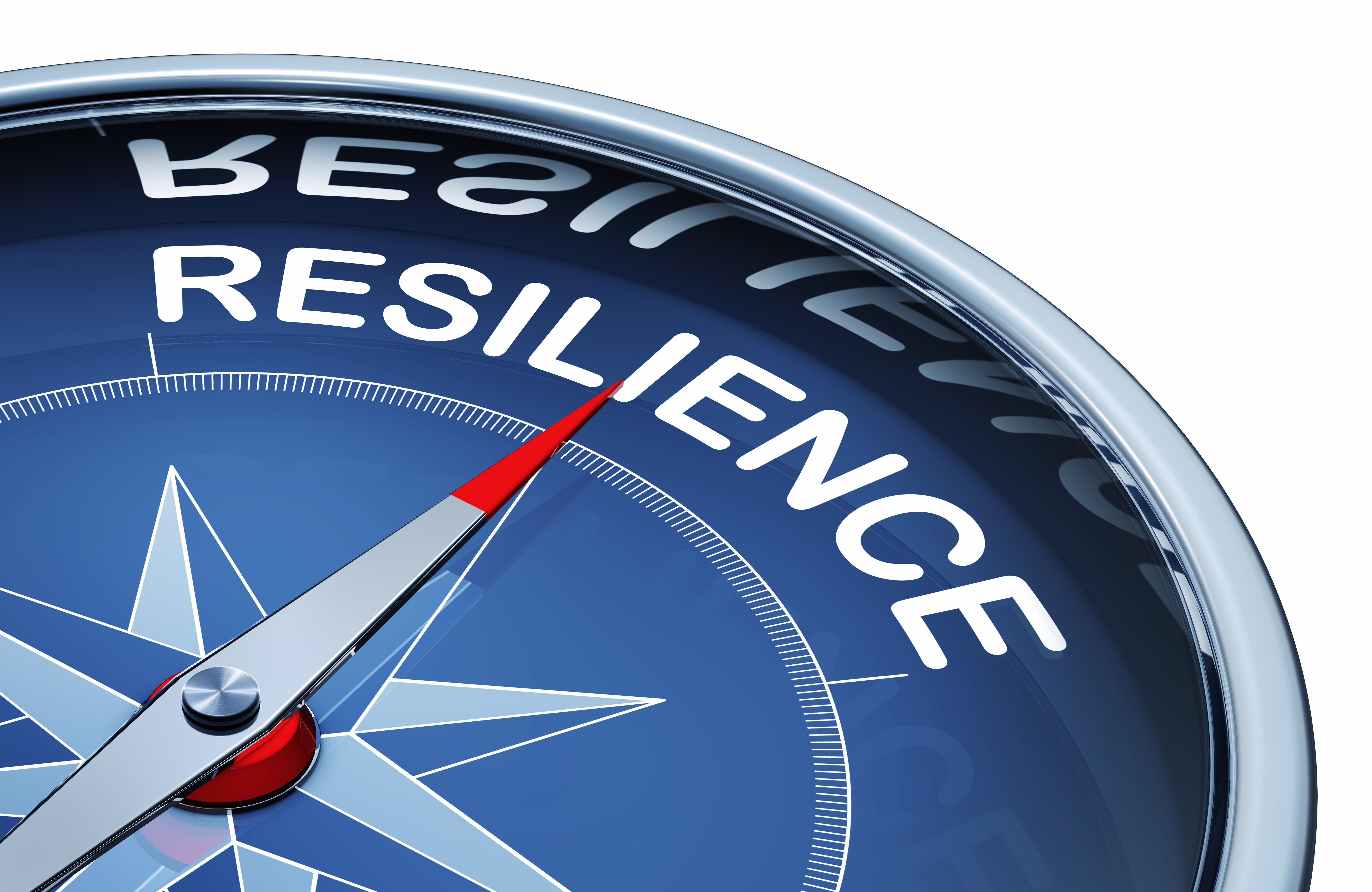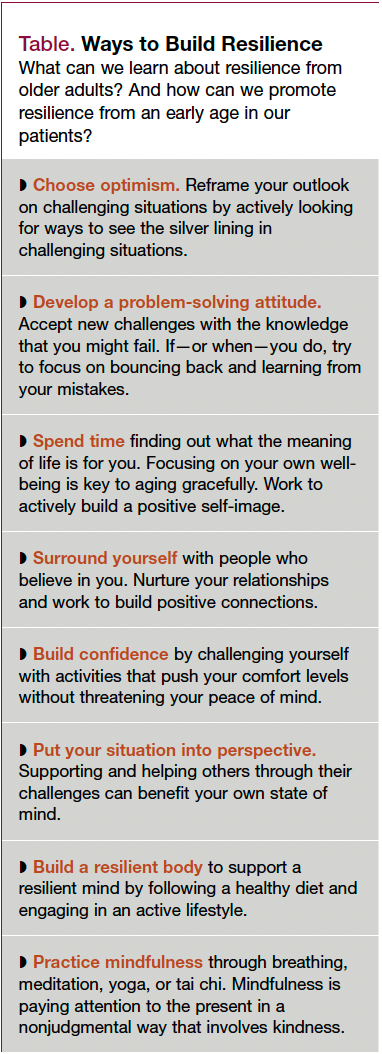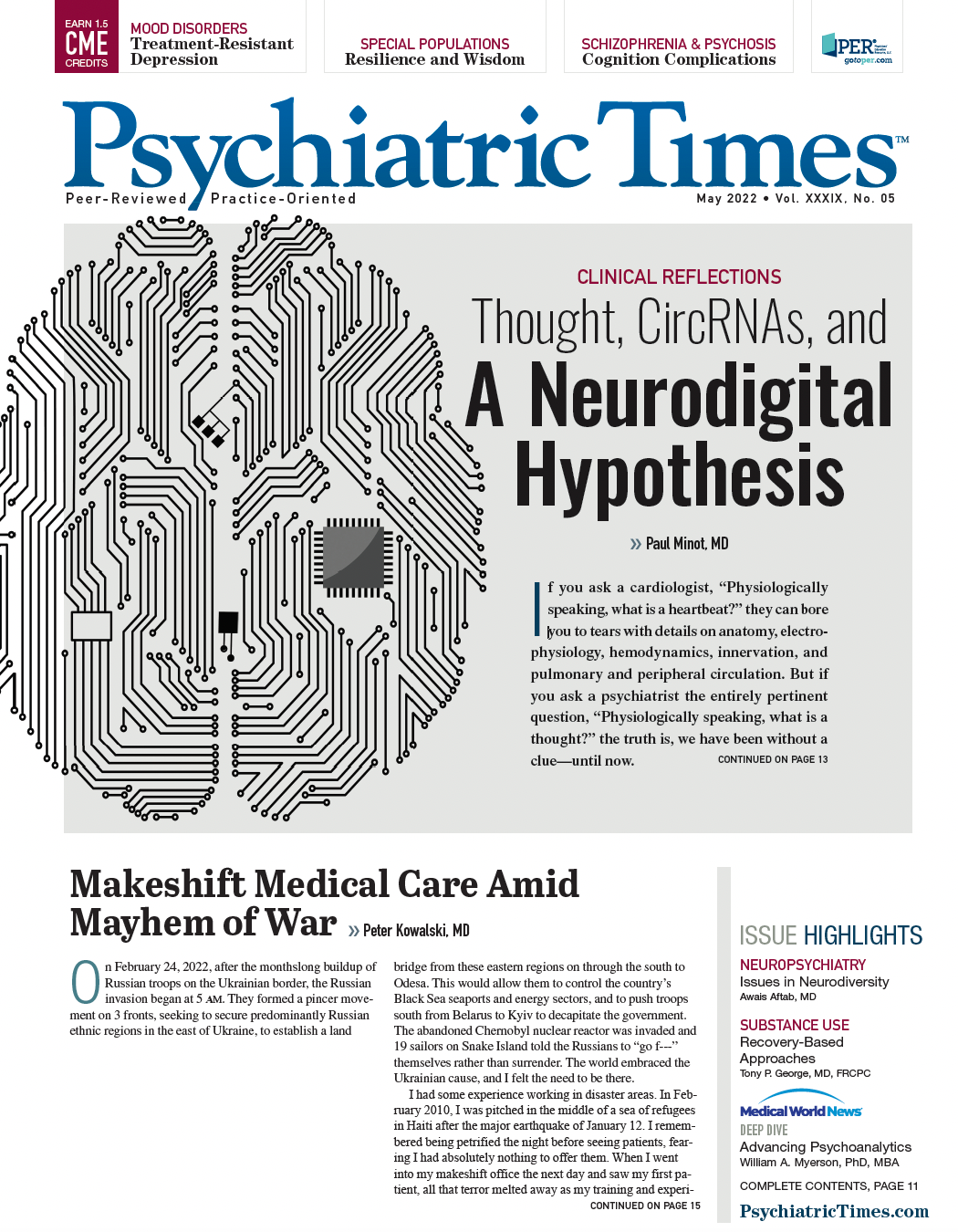Publication
Article
Psychiatric Times
The Science of Resilience and Wisdom
Author(s):
What can we learn about resilience from senior citizens?
frank peters/AdobeStock

Senior citizens sit at the center of life’s oldest paradox. For many, the closer they come to death, the more their emotional well-being seems to increase. After a lifetime of losing loved ones, suffering defeats, and experiencing physical decline, older adults still manage to take life’s punches in stride. Resilience with aging is what gives seniors an edge. How they have adapted to the aging process speaks to their incredible resilience. And it begs the question: What can the rest of us learn from them?
The Neurobiology of Resilience
Resilience is the ability to quickly recover from stress, whether physical, mental, or emotional.
Efforts by neuroscience to study why some people are more resilient than others have generally led to elusive answers. For example, a study observed brain images of people who had suffered abuse as children. The intent was to compare brain changes between those who went on to develop psychopathology as adults and those who developed resilience.1 Surprisingly, brain changes associated with maltreatment were noticed equally in both groups of people, whether or not they exhibited psychiatric symptoms. The authors speculated that there may be other molecular alterations or neurobiological changes that helped them adapt to stress.1
Resilience is thought to involve 3 main brain regions: the prefrontal cortex, the hippocampus, and the amygdala. Research indicates that resilient people have greater connectivity between areas of the prefrontal cortex to the areas of the brain linked to emotions. Their hippocampi and amygdalae are less stimulated.2
The prefrontal cortex is involved in decision-making and emotional control. Activity in the orbitofrontal network especially plays a role, particularly as it involves reward-related memories. One study suggested that activating this system can improve the body’s stress response and lead to greater psychological resilience.3
In the hippocampus, gray and white matter volume is larger in resilient adults, with more connectivity between the limbic system and central executive network.4
As part of the brain’s limbic system, the amygdala plays a huge role in decision-making by helping us process information and rewards, assess threats, and regulate emotions.5 It also ties emotions into certain memories. Resilience is higher when there is less connectivity between the amygdala nuclei and the ventral default-mode network.5
Resilience involves several neurotransmitters. These include norepinephrine, neuropeptide Y, galanin, corticotropin-releasing hormone, dehydroepiandrosterone (DHEA), dehydroepiandrosterone sulfate (DHEA-S), dopamine, serotonin, abrineurin (BDNF), and allopregnanolone (ALLO).6
Resilience does not imply a reduction in the response to stress. Rather, more of our brain is involved in adapting to it. As described in 1 article, it is an “active process that implies ongoing adaptive plasticity without external intervention.”7
Of the mice subjected to stress in 1 study, those with higher levels of resilience engaged 3 times the numbers of genes in their stress response than those with lower resilience.8 Researchers also identified a potassium channel in the Ih channel gene in the brain, which experienced increased activity in the brains of mice with higher resilience.8
In addition to neurobiology, genetics, and environment, resilience is shaped by other factors including personality, temperament, physical fitness, and social support. All of this can shape how we react to stress and whether we view it as challenging or threatening. Manageable stress can hone and improve our performance, while situations experienced as threatening may significantly impact one’s physical and mental health.
Table. Ways to Build Resilience

Whether our resilience level is genetically endowed or something that is learned has long been the subject of debate. It may be a mix of the two. There is strong evidence to suggest that strategies can be employed to build the muscle of resilience.2 To see ways to build resilience, see the Table.
One study analyzed the effects of positive memory recall on a group of teens at risk of depression.2 The practice of recalling good memories resulted in lower cortisol and negative mood levels over the course of a year. By actively shifting focus away from memories of stressful events, these teens learned to actively create resilience.2
Find ways to assess resilience in the Sidebar.
Sidebar. Assessing Resilience

The Lifecycle of Resilience
With an inheritance range of 33% to 53%, resilience appears to be passed down the generations.9 It is strongest when nurtured at an early age and modeled by parents and caregivers.9 Because of their fragility, children exposed to higher levels of stress are more susceptible to psychiatric vulnerability, which explains why most mental illnesses are established by age 24.9 The stronger the social network and access to resources at an early age, the better children can stock up on valuable coping skills for adulthood.
Today’s senior citizens were born at the beginning of an era of unprecedented technology, global connection, and warfare. Those born in the 1920s were the first to enjoy cars, telephones, and movies. Many endured financial insecurities during the Great Depression, and everyone watched as Hitler drew the world into madness and World War II.
As the United States recovered, the Baby Boomer generation grew up. Born between 1946 and 1964, they would go on to become the largest living adult generation in the United States, influencing everything from the Civil Rights Movement to Social Security reform.10 They witnessed the Korean and Vietnam wars, the assassination of a president, and a Cold War that hung a shadow of fear over everyday life. The fact that they have seen and experienced so much explains why 90% of seniors have experienced at least 1 traumatic event during their lives.11 It also helps explain their impressive resilience.
To make it this far in life means seniors have accumulated a lifetime of experiences ranging from challenging to traumatic. Their ability to understand the big picture, see the silver lining, and not sweat the small stuff allows them to feel more content and less psychopathologic than other population groups.12
Attaining Wisdom
And yet, even with this rich experience, a senior’s resilience can become brittle. Negative perspectives and a resistance to growing old can work against them. They may become overwhelmed with loneliness and sorrow. Losing spouses and friends, seeing family members less and less, and disengaging from activities can be discouraging experiences for anyone.
What is interesting about the COVID-19 pandemic are indications that many older adults adapted to the isolation of lockdown better than expected, especially in the beginning. COVID-19 provided a good distraction. Knowing their isolation protected them against COVID-19 contributed to lower anxiety levels among seniors. Technology made it easier than ever to connect with family, strengthening important social bonds. And the confines of social distancing encouraged seniors to value and savor the social connections they did have.13
Keeping the brain engaged is key to building resilience. By seeking out new challenges and activities, seniors can take their resilience to the next level by developing wisdom.
Wisdom is more strongly associated with life satisfaction than physical health, finances, socioeconomic status, social involvement, physical environment, or age. Among older hospice patients and nursing home residents, wisdom is more connected to their sense of well-being than it is among other, healthier seniors.14
One way to understand wisdom is to observe it as a 3-dimensional model that incorporates cognition, reflection, and compassion. The cognitive dimension refers to a person’s need to understand the deeper truths of life, including its positive and negative aspects. The reflective dimension paves the way to this understanding by pondering events from many perspectives rather than blaming others or circumstances. The compassionate dimension brings a broad awareness of human nature and suffering that motivates people to help others with sympathy and compassion.14
The reflective dimension has an especially strong effect on a person’s well-being. This is what allows seniors to be more aware of their feelings and exert greater control over negative emotions, especially those who seek to blame others for their own unhappiness. In short, reflective wisdom allows people to understand and, more importantly, accept their reality.14
Ultimately, wisdom is what allows seniors to make sense of their paradox. It guides and protects them through the fear and hardship of life, comforting to the very end.
Concluding Thoughts
Every one of us will confront several challenges in our lifetime. How we choose to deal with these experiences will determine our future path and affect our sense of well-being.
Resilience is earned over time by exercising a lot of patience, wisdom, and experience in the face of adversity. It is important to understand your limitations—what you can and cannot accomplish—by doing the best with what you have. The earlier we train ourselves to think this way, the richer our lives will be. Most of us have access to resilient older adults, whether they are our own relatives, our neighbors, or other people in the community. When younger and older generations share their experiences, they work together to build a better community and a better tomorrow.
Dr Parmar is a psychiatrist with Mindpath Health.
References
1. Ohashi K, Anderson CM, Bolger EA, et al. Susceptibility or resilience to maltreatment can be explained by specific differences in brain network architecture. Biol Psychiatry. 2019;85(8):690-702.
2. Moreno-López L. What the distinctive brains of resilient people can teach us. Psyche. January 13, 2021. Accessed December 21, 2021. https://psyche.co/ideas/what-the-distinctive-brains-of-resilient-people-can-teach-us
3. Son SJ, Park B, Choi JW, et al. Psychological resilience enhances the orbitofrontal network in the elderly with mild cognitive impairment. Front Psychiatry. 2019;10:615.
4. Moreno-López L, Ioannidis K, Askelund AD, et al. The resilient emotional brain: a scoping review of the medial prefrontal cortex and limbic structure and function in resilient adults with a history of childhood maltreatment. Biol Psychiatry Cogn Neurosci Neuroimaging. 2020;5(4):392-402.
5. Leaver AM, Yang H, Siddarth P, et al. Resilience and amygdala function in older healthy and depressed adults. J Affect Disord. 2018;237:27-34.
6. Osório C, Probert T, Jones E, et al. Adapting to stress: understanding the neurobiology of resilience. Behav Med. 2017;43(4):307-322.
7. Hunter RG, Gray JD, McEwen BS. The neuroscience of resilience. J Soc Social Work Res. 2018;9(2):305-339.
8. Patoine B. The resilient brain. Dana Foundation. August 7, 2019. Accessed December 21, 2021. https://www.dana.org/article/the-neurobiology-of-resilience/
9. Tucker P. What is resilience? Psychiatric Times. 2021;38(7).
10. Fry R. Millennials overtake Baby Boomers as America’s largest generation. Pew Research Center. April 28, 2020. Accessed December 21, 2021. https://www.pewresearch.org/fact-tank/2020/04/28/millennials-overtake-baby-boomers-as-americas-largest-generation/
11. Kuwert P, Pietrzak RH, Glaesmer H. Trauma and posttraumatic stress disorder in older adults. CMAJ. 2013;185(8):685.
12. Edwards ES, Hall J, Zautra A. Resilience in aging. Arizona Center on Aging. April 2012. Accessed December 21, 2021. https://nursingandhealth.asu.edu/sites/default/files/resilience-in-aging.pdf
13. Vahia IV, Jeste DV, Reynolds CF 3rd. Older adults and the mental health effects of COVID-19. JAMA. 2020;324(22):2253-2254.
14. Ardelt M, Jeste DV. Wisdom and hard times: the ameliorating effect of wisdom on the negative association between adverse life events and well-being. J Gerontol B Psychol Sci Soc Sci. 2018;73(8):1374-1383. ❒







